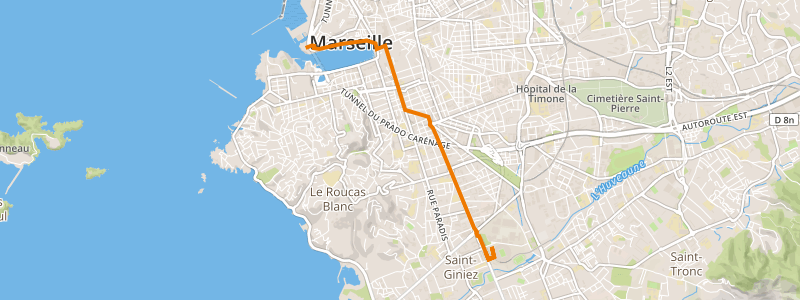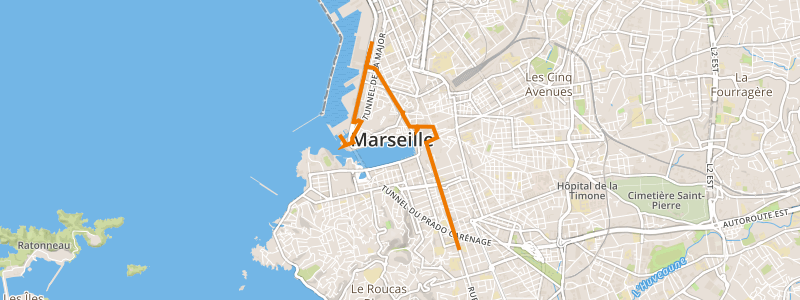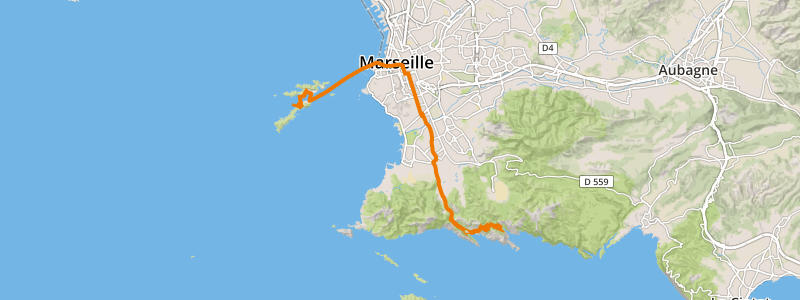Origin of the Project
Charlemagne-Émile de Maupas - New Prefect
In the 19th century, Napoleon III was in power. Then senator, Charlemagne-Émile de Maupas decided to inform the Emperor of the situation in Marseille: as the city developed, his prefect, Olympe Besson, slowed down this progress.
Napoléon does not seem to realize what the senator explains to him. It was not until his visit with Empress Eugenie to the Phocaean city in September 1860 that he realized that the Prefect's incompetence was a cause for concern. The emperor then removed Olympus Besson from his functions and replaced him with Maupas. Its mission is to modernize the city's aging infrastructure.
As soon as he was nominated, the new Prefect launched the construction of a new Prefecture to replace the current one, which had become much too small. The former Prefecture was then located in the current highschool Lycée Montgrand.
The construction of the new Prefecture
The construction of the new Prefecture began in 1862 and ended in 1866. It is therefore a monument that is part of the great wave of public building construction in Marseille during the Second Empire.
De Maupas asked the departmental architect Auguste Martin to design it. The chosen location is located on the route of the city's former ramparts built in 1669. However, due to the instability of the terrain, this was quite problematic. The last stone was finally laid at the end of 1866 and the inauguration took place on January 2, 1867. For the record, Prefect Maupas was relieved of his duties by a decree of the Emperor shortly before the inauguration. The official version says it is because of health problems, but the unofficial version is that De Maupas has spent far too much. De Maupas, however, fulfilled his mission by marking Marseille's history.
In 1871, a "Commune" was proclaimed in Marseille and the prefecture was taken by the Marseille communards, and displayed the red flag. When the place was taken over by the army, the building was slightly damaged.
During Marseille's liberation, the Prefecture was invaded by the Allies and bombarded by the Germans as fighting broke out in the city. Finally, it was from the balcony of the prefecture that De Gaulle made his speech to the crowd in September 1944.
On the architectural side, the inspiration was largely inspired by the Palazzo Vecchio in Florence, Italy. Built on 7500 m², the prefecture has two courtyards and a garden. The building is designed to be functional as part of the operations of a high administration. In a Napoleon III style, it has all the necessary amenities: reception rooms, residence for the prefect, his family and his staff. Furniture is an art object of the First and Second Empire.
The prefecture of Bouches-du-Rhône nowadays
There is no way to miss this monumental building, 90 metres long and 80 metres deep, which is located in the extension of the world-famous rue Saint Ferréol, (the main pedestrian shopping street in the city). The interior decoration has been carefully chosen to reflect all the Napoleonic power and all the extravagance of the Prefect de Maupas.
The Prefecture has been included in the register of historical monuments since 1979.
Even today, the Prefecture remains one of the most beautiful buildings of the Third Republic. While walking towards the rue St Ferréol, you can admire the Prefecture and understand all the immensity of this monument.
Consider renting a bike or renting a segway to visit Marseille in a fun way. Did you know that the Petit Train de Marseille will allow you to discover the city along 2 different ways? The departure and ticket office are located in the Old Port.




